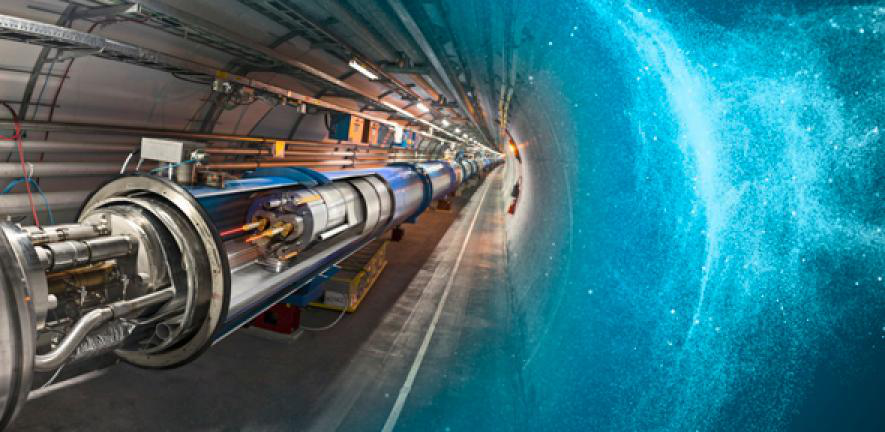Conveners
Parallel Session I, Astro-Particle
- Hassan Abdalla (Omdurman Islamic University)
- Claudio Paulo (Universidade Eduardo Mondlane)
T2K is a long baseline experiment providing world-leading measurements of the parameters governing neutrino oscillation.
T2K data enable first 3sigma exclusion for some intervals of the CP-violating phase $\delta_{CP}$ and precision measurements of the atmospheric parameters $\Delta m^{2}_{32}$, $\sin^2(\theta_{23}$).
T2K exploits a beam of muon neutrinos and antineutrinos at the Japan...
KM3NeT is a multi-purpose neutrino observatory currently being deployed at the bottom of the Mediterranean Sea. It consists of two detectors: ORCA and ARCA (for Oscillation and Astroparticle Research with Cosmics in the Abyss). ARCA will instrument 1 Gton of seawater, with the primary goal of detecting cosmic neutrinos with energies between several tens of GeV and PeV. Due to its position in...
Gamma-ray bright blazars are beginning to emerge as a very plausible
source of at least some of the very-high-energy neutrinos detected
by IceCube. Most searches for a correlation between blazars and neutrino
events have so far focused on gamma-ray flaring blazars, motivated by
the fact that very-high-energy gamma-rays are co-produced with neutrinos
if neutrinos are produced through...
The direct detection of gravitational waves opened an unprecedented channel to probe fundamental physics. Proposed extensions of our current theories predict a dispersion of the gravitational waves during their propagation, leading to a modification of the signals observed by ground-based interferometers compared to their predictions from general relativity. In this talk, I present several...
This work presents an updated search for magnetic monopoles using data taken with the ANTARES neutrino telescope over a period of 10 years (January 2008 to December 2017). In accordance with some grand unification theories, magnetic monopoles were created during the phase of symmetry breaking in the early Universe, and accelerated by galactic magnetic fields. As a consequence of their high...
Nuclearites are hypothetical heavy particles composed by roughly equal proportions of up, down and strange quarks. These particles loose their energy by atomic collisions and they induce visible light in transparent mediums through black-body radiation from a shock wave.
ANTARES is a neutrinos telescope running at 2475 meters under water in the Mediterranean Sea. Nuclearites with a masses...
Dark matter captured by interaction with electrons inside the Sun may annihilate via a long-lived mediator to produce observable gamma-ray signals. We utilize solar gamma-ray flux measurements from the Fermi Large Area Telescope and High Altitude Water Cherenkov observatory to put bounds on the dark matter electron scattering cross-section. We find that our limits are four to six orders of...
We present a new paradigm for scalar dark matter (DM) particles production in the early Universe. We show the appearance of a new quadratic potential after inflation. This result is due to the stabilization of scalar fields particles. In this case, the mass of this field increases and becomes a candidate for dark matter. We show the van der Waals equation of state for DM, which leads to the...
Using the Gauss-Bonnet formalism, the deflection angle of light rays by accelerating black holes is computed and investigated. The effect of the accelerating parameter is inspected. Then, the influence of the cosmological effect is also discussed.
dark matter is an essential ingredient for understanding the recipe of the universe's creation. Since it cannot be made of any of the usual standard model particles, therefore the construction of particle-physics models for dark matter has become a huge industry, accelerated quite recently by many studies. The techniques needed to detect these different signatures of dark matter are composed...
Using the Hamilton-Jacobi formalism, we investigate the shadow behaviors of the black holes in a cavity. We approach such behaviors from the thermodynamic quantities. Among others, we establish a possible interplay between the thermodynamic and shadow aspects of such balck hole solutions.
Radio indirect detection has evolved into a promising approach to probe the nature of dark matter. This will only be enhanced by the construction of the full SKA. In the mean-time, MeerKAT’s potential as a dark matter detector has largely been ignored. In this work we will present simulations of the sensitivity of MeerKAT to diffuse radio emissions and apply them the dwarf galaxy Reticulum II...

